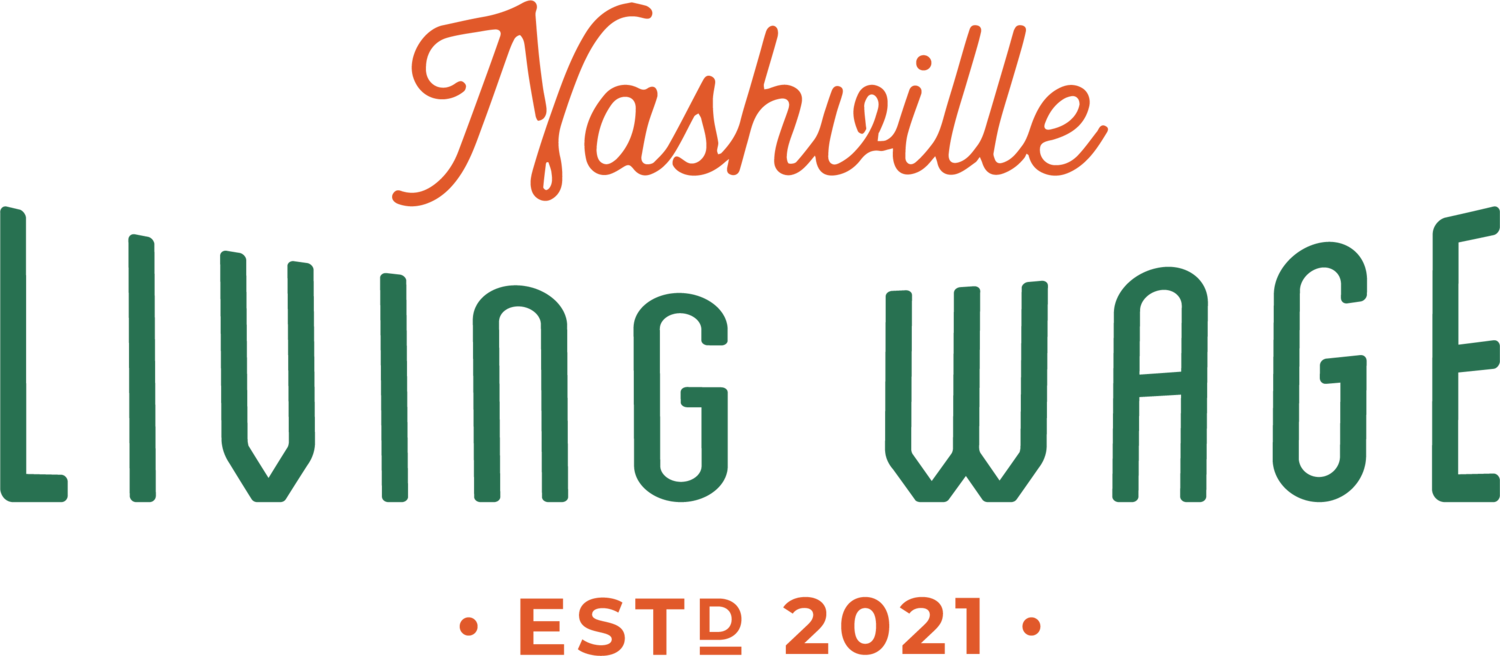Survival vs Stability Wages
The ALICE Report creates two budgets: a Survival Budget and a Stability Budget. Our Living Wage is Based on the Survival Budget.
The cart on the left shows household expenses relative to the amount that can be spent on a monthly basis based on either the Survival Budget or the Stability Budget.
The higher the hourly wage, the more a family can spend on basic living expenses. The stability budget is based on a higher hourly wage than the survival budget. Both are significantly higher than the federally mandated minimum wage, which alone barely covers the cost of housing in Nashville.
The hourly wage supports the stability budget and allows for greater monthly expenditures for housing, food, transportation, and miscellaneous expenses (including savings).
The pandemic has created two groups of ALICE workers: essential and non-essential.
The industries where ALICE works – food service, leisure, hospitality, and tourism – have been hit the hardest.
Illustrates the ability to afford typical housing in metropolitan areas across the country by comparing wage data and housing costs for working families.
The database is updated every quarter and offers reports highlighting different angles of housing costs for families across the country.
This report provides family-sustaining wage thresholds derived from pre-pandemic data that can guide public-private partnerships that want to rebuild a more socially stable and prosperous economy in the wake of COVID-19.
Average hourly earnings that account for inflation actually decreased by 0.5% for the month. Wages are going up, however, the increased inflation negates wage growth, such that "rising wages" are actually declining wages.
A statewide data project examines the financial hardship of residents in every Tennessee county. One in four families in our region cannot afford basic necessities, including housing, food, childcare, healthcare, and transportation.
A comprehensive look at the financial stability of every person living in the United States. Download the Tennessee profile to see the true cost of living by state, based on median monthly income and discretionary spending left at the end of each month after expenses.
Economists look at a range of figures when calculating a Living Wage. Costs include food, child care, health care, housing, transportation, taxes, and other basic expenses.
Long-term solutions for the growing number of Tennessee families struggling with financial instability. In 2018, the cost of survival ranged annually from $23,064 for a single adult to $25,716 for a senior citizen and $65,040 for a family of four with an infant and a preschooler. The median hourly wage for a retail salesperson was $11.09 or $22,180 per year less than all the budgets.
Between 2007 and 2018, Tennessee experienced steady economic improvements. Unemployment in the state fell to historic lows, GDP grew, and wages rose slightly.
In 2018, there were 47% of households still struggled to make ends meet and 15% were living below the Federal Poverty Level (FPL). Another 32% met ALICE thresholds. These households earned above the FPL but not enough to afford basic household necessities.
High levels of food insecurity across the United States are largely attributed to the prevailing minimum wage. The majority of households that suffer from food insecurity report worrying that their food will run out before they obtain money to purchase more, as well as being unable to afford to eat balanced meals. As a result, politicians and public policy advocates link minimum wage with widespread food insecurity in the country.
